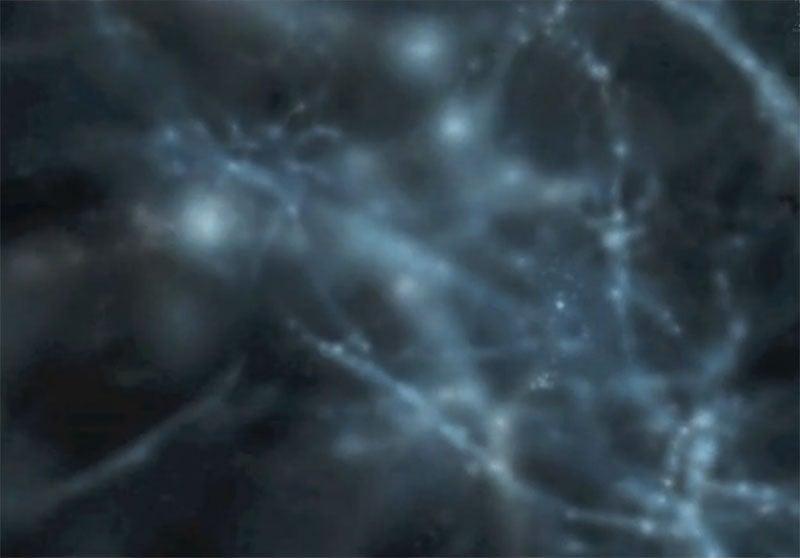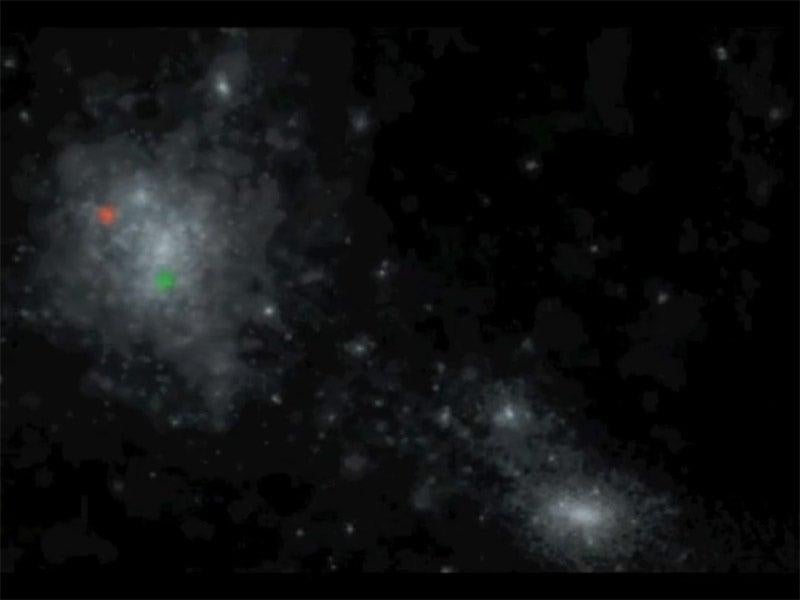Study Reveals Milky Way among Oddball Four Percent
It was astronomers who taught humans the tough lesson that we are not the center of the universe, at least not literally.
By Calla Cofield
It was astronomers who taught humans the tough lesson that we are not the center of the universe, at least not literally. Our planet, our star and our galaxy are similar to countless others. Or so it seemed. New research by scientists at Stanford University and the Kavli Institute for Particle Astrophysics and Cosmology at SLAC and Stanford shows our home galaxy belongs to a rare subset among the billions that populate the cosmos. One of the most extensive studies of its kind, this work also lends support to the "Cold Dark Matter" theory of galaxy formation, and provides a better understanding of the Milky Way galaxy.
"We've always been interested in how the Milky Way fits into the broader context of the universe," said Risa Wechsler, assistant professor at Stanford University and researcher at the joint SLAC-Stanford Kavli Institute, who led the research team. "This research helps us understand whether our galaxy is typical or not."
The study, summarized in three papers on the physics ArXiv and in the May 20 Astrophysical Journal, compared the Milky Way with galaxies similar to it in luminosity (the amount of light it emits in a given amount of time) and distance to other bright galaxies. Among more than 200,000 considered, our galaxy belongs to a unique four percent that have two satellite galaxies as bright and close by as our two closest neighbors, the Large and Small Magellanic Clouds. Another 11 percent have one satellite galaxy similar to the Clouds, while 81 percent have none. In this way, the Milky Way differs from more than 95 percent of all galaxies to which it should appear nearly identical.
"In this sense, the Magellanic Clouds may be like the Milky Way’s big ears or crooked nose," said KIPAC postdoc Brian Gerke, co-author on the paper, "a bit strange, to be sure, but not necessarily any weirder than what you might find in any other galaxy.”
Their results were surprising, though not extreme. In cosmology, an idea named for Renaissance astronomer Nicolas Copernicus—who first posited that Earth is not the center of the universe—suggests that matter in the cosmos is relatively uniform in all directions, and generally homogeneous across vast swaths of space.
“The Copernican Principle implies that the Milky Way should look like a galaxy chosen at random from the general galaxy population," Gerke said. "But since galaxies, like people, are extremely diverse in their properties, it should not be surprising if our particular home galaxy is a bit unusual in at least one respect, just as a randomly selected person would probably have at least one rather odd feature."
To build their analysis, the researchers dug deep into a tremendous volume of data from the Sloan Digital Sky Survey, the most extensive survey of the optical sky performed to date, to create a census of galaxies in our universe. The work represents one of the most extensive studies of this kind ever performed.
The survey also gave the researchers the opportunity to test the primary current theory of galaxy formation, known as the Cold Dark Matter theory. CDM theory speculates that much of the mass in our universe does not emit light (is dark) and that its particles move relatively slowly (are cold). The theory attempts to explain how our universe went from a smooth state after the big bang to the universe we see today, in which matter has clumped into planets, stars and galaxies.
Using a cutting-edge numerical simulation called Bolshoi, the researchers produced a model of the universe highlighting the overall population of galaxies. A simulation of this kind provides the computer with a set of starting conditions, or a starting theory, then allows the program to build the universe based on that starting point. If the resulting model of the universe resembles what we see today, then the theory is on the right track. The researchers' simulation passed this test; the computer simulation produced a model of the universe that matched the Sloan data—including the distribution of the numbers of satellite galaxies around galaxies like the Milky Way—and lends further support to the Cold Dark Matter theory.
Beyond the mass distribution of the current universe, Wechsler said the simulations and comparative galaxies provided an opportunity to learn about the formation of the Milky Way and its satellites. “The fact that the Milky Way is unusual in this respect provides clues to its formation history,” she said. Using the simulated galaxies that are similar to the Milky Way, which also possess satellite galaxies like the Magellanic Clouds, scientists can study aspects of the Milky Way that are difficult to observe from inside it, Wechsler said, such as the total mass of dark matter and how the galaxy assembled.
The research was funded by the National Science Foundation and by the Department of Energy. The Bolshoi simulation used in this work was run by Anatoly Klpyin and Joel Primack at the NASA Advanced Supercomputing Pleiades computer at NASA Ames Research Center.
Related Links
- Further information with explanatory video: Understanding the Cosmological Context of the Milky Way and its Neighbors
- Statistics of Satellite Galaxies Around Milky Way-Like Hosts, Busha, Wechsler, Behroozi et al. 2011, arXiv:1011.6373
- How Common are the Magellanic Clouds?, Liu, Gerke, Wechsler, Behroozi, and Busha 2011, The Astrophysical Journal 733, 62, doi: 10.1088/0004-637X/733/1/62 and arXiv:1011.2255
- The Mass Distribution and Assembly of the Milky Way from the Properties of the Magellanic Clouds, Busha, Marshall, Wechsler, Klypin, and Primack 2011, arXiv:1011.2203

